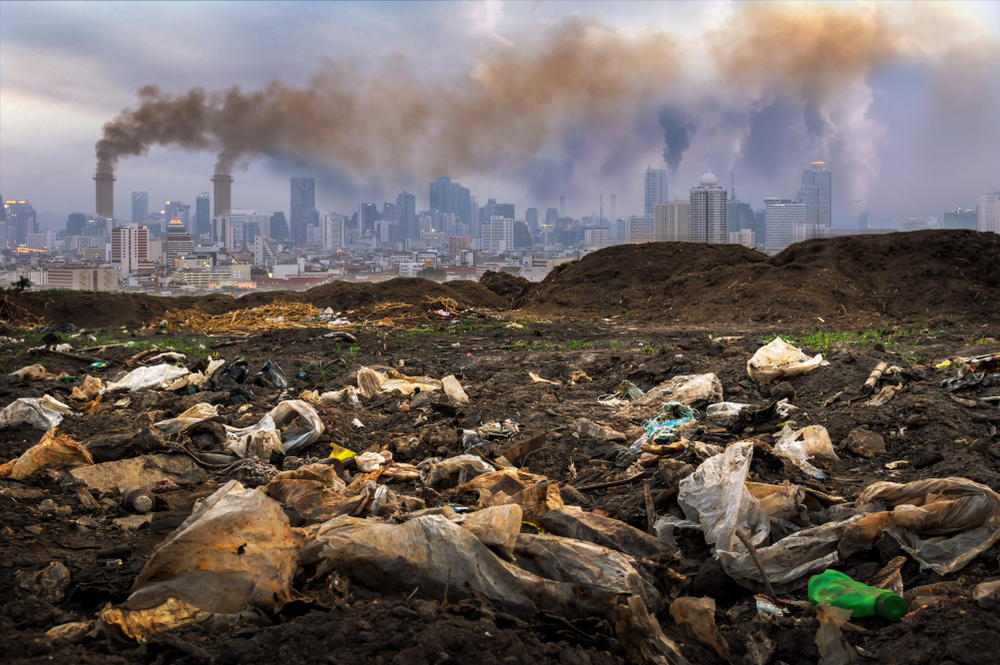Introduction
Defining Industrial Waste
Industrial waste refers to by-products generated during industrial processes such as manufacturing, construction, and other large-scale business activities. These wastes come in various forms—solid, liquid, or gaseous—and are categorized as hazardous or non-hazardous based on their composition and potential impact.
Examples of Industries Generating Waste
- Manufacturing: Produces scrap metals, plastic residues, chemical by-products, and packaging materials.
- Construction: Generates construction debris, excess wood, and leftover materials from site work.
- Electronics: Creates e-waste, including discarded circuit boards, batteries, and obsolete devices.
Importance of Managing Industrial Waste
Effective management of industrial waste ensures environmental protection, compliance with regulations, and public health safety. It also fosters sustainability by encouraging recycling and resource optimization, reducing the strain on natural ecosystems.
Types of Industrial Waste
Hazardous Waste
- Examples: Chemical residues, toxic by-products, radioactive materials, and contaminated solvents.
- Impacts: Health risks, such as respiratory issues or poisoning, and environmental damage through soil and water contamination.
Non-Hazardous Waste
- Examples: Scrap metals, cardboard, and packaging materials.
- Recyclability: Non-hazardous waste often holds value as a resource for recycling, reducing the need for raw materials.
E-Waste (Electronic Waste)
- Specifics: Includes discarded electronic items like computers, smartphones, and TVs.
- Challenges: Recovering valuable metals (e.g., gold, silver, copper) requires specialized recycling methods, while improper disposal may release harmful toxins like lead or mercury.
Liquid Waste
- Examples: Industrial wastewater, cleaning solutions, and used oil.
- Concerns: Requires treatment to remove pollutants before discharge to avoid harming aquatic life or contaminating water supplies.
Solid Waste
- Examples: Plastics, textiles, ceramics, and discarded machinery.
- Management: A significant portion of solid waste can be recycled, composted, or converted into energy through incineration.
Sources of Industrial Waste
- Mining and Extraction: Generates tailings, slag, and overburden waste from resource extraction processes.
- Manufacturing and Production: Includes by-products like plastics, chemical sludge, and defective materials.
- Agriculture and Food Processing: Produces organic residues, wastewater, and discarded packaging.
- Energy Production: Creates coal ash, fly ash, and other residues from burning fossil fuels.
Environmental Impacts
Soil Contamination
Improper disposal of industrial waste introduces toxins into the soil, reducing fertility and harming vegetation.
Air and Water Pollution
Release of harmful emissions and untreated wastewater contributes to smog, acid rain, and contamination of freshwater sources.
Impacts on Biodiversity
Industrial waste disrupts ecosystems by destroying habitats and threatening species survival through toxic exposure.
Waste Management Practices
Reduction at Source
- Process Optimization: Improving manufacturing processes to minimize waste production.
- Sustainable Materials: Switching to biodegradable or recyclable materials reduces waste volume.
Recycling and Reuse
- Examples: Transforming scrap metals into new industrial components or using recycled plastics for packaging.
Treatment Methods
- Chemical Methods: Neutralizing harmful substances in liquid or hazardous waste.
- Biological Methods: Leveraging bacteria and other microbes to break down organic matter.
- Thermal Methods: Using high-temperature incineration to reduce waste volume and generate energy.
Safe Disposal
- Landfilling: Securely managing non-recyclable waste to minimize environmental impact.
- Incineration: Effective for hazardous waste but requires advanced filtration to control emissions.
Legislative Compliance
Businesses must adhere to laws like the Resource Conservation and Recovery Act (RCRA) in the U.S. or the EU Waste Framework Directive to ensure sustainable waste management.
Industrial Waste and Circular Economy
Resource Recovery
Turning waste into valuable resources, such as extracting rare metals from e-waste or creating biofuels from organic waste.
Circular Economy Initiatives
Examples include closed-loop manufacturing systems, where materials are reused indefinitely, and waste-to-energy plants that convert waste into electricity or heat.
Key Challenges in Industrial Waste Management
- Cost Implications: Advanced waste treatment facilities require significant investment.
- Technological Limitations: Many regions lack the infrastructure to process complex waste types, such as e-waste or hazardous materials.
- Compliance and Monitoring: Strict environmental standards demand rigorous monitoring, which can be resource-intensive for businesses.
Case Studies and Examples
Successful Industrial Waste Management Practices
- Example: Toyota achieved zero landfill waste in many of its plants by reusing scrap materials and implementing innovative recycling strategies.
Comparative Analysis of Waste Policies
Germany, known for its strict recycling laws, recycles over 65% of its waste, far surpassing countries with fewer regulations, like the U.S., which recycles about 32%.
Future Trends
Innovations in Recycling
Technologies like advanced material sorting and chemical recycling can drastically improve efficiency.
Role of AI and IoT
Smart sensors and AI-driven platforms provide real-time waste monitoring, predictive analytics, and automated sorting, optimizing industrial waste management processes.
FAQs
What are the main types of industrial waste?
Hazardous, non-hazardous, e-waste, liquid waste, and solid waste.
How is hazardous industrial waste treated?
Through chemical neutralization, biological degradation, or thermal incineration.
Why is industrial waste management crucial?
To protect the environment, safeguard public health, and promote sustainability.
Importance of Awareness
Understanding the significance of waste reduction is vital for businesses and individuals.
Steps Businesses Can Take
- Implement waste reduction practices in daily operations.
- Invest in advanced recycling technologies.
- Partner with certified recycling companies for better resource recovery.
By prioritizing industrial waste management, businesses contribute to a sustainable future while ensuring compliance with environmental laws and fostering community trust.

